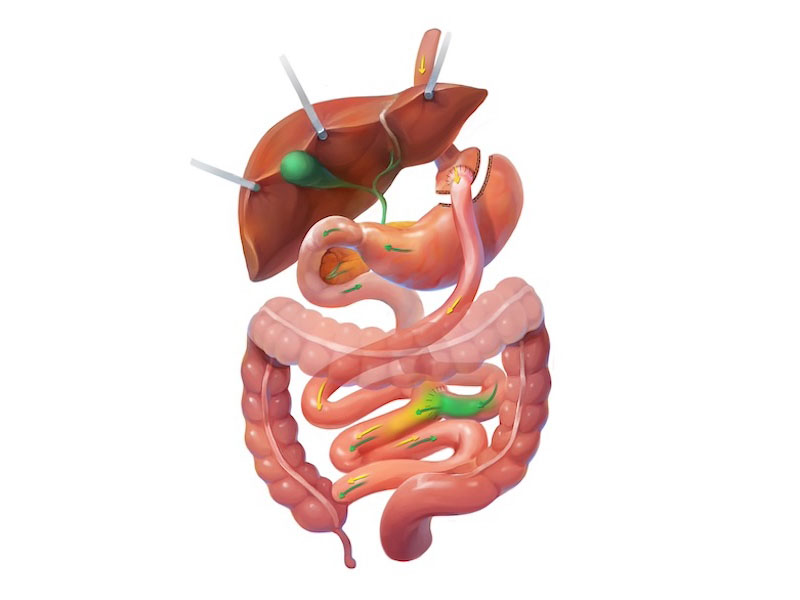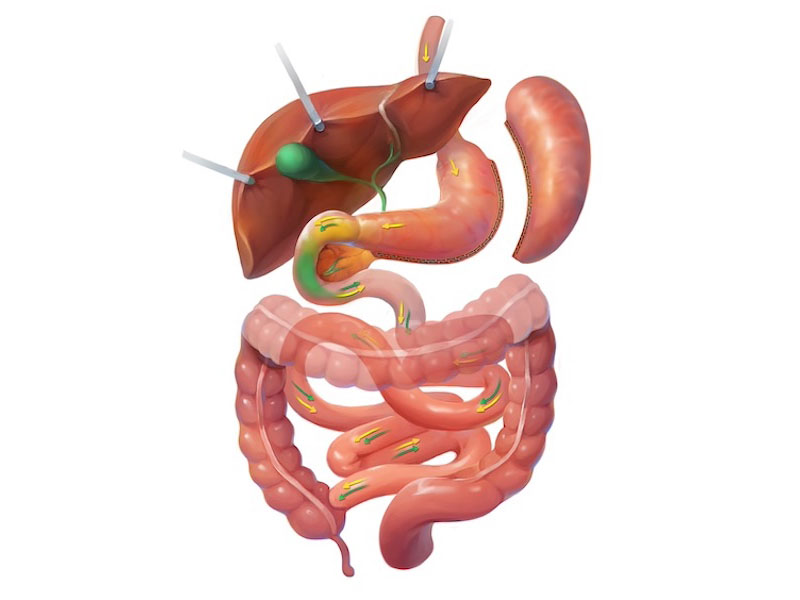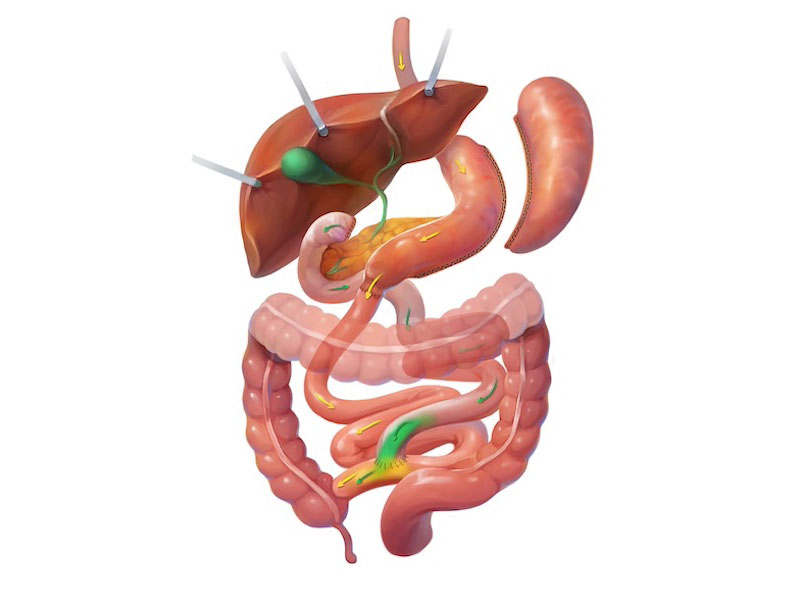
While surgery to lose weight and improve the diseases associated with excess weight may seem drastic, obesity is far more dangerous in many patients. The risks of bariatric surgery in qualifying patients, when utilizing an experienced surgeon, are about the same as having a gallbladder removed.
This does not mean that the procedure alone will allow the patient to realize their full potential weight loss. Patients will need to commit to a new and improved lifestyle that includes a healthier diet and regular exercise. While this may seem daunting, it’s remarkable how a healthy lifestyle becomes the norm within just a few months, setting the stage for long-term success. The most common procedures we offer include:
Once the most commonly performed bariatric surgery in the United States, the gastric bypass was, for a time, the gold standard in weight loss and obesity disease-related improvement, especially for those who have adult-onset diabetes and chronic acid reflux. The gastric bypass combines restriction with malabsorption, offering the second-greatest weight loss potential of the procedures we offer, topped only by the duodenal switch. The gastric bypass is also known as the Roux-en-Y gastric bypass. Learn more about gastric bypass surgery.

The most popular weight loss surgery procedure in the United States, the gastric sleeve was exclusively used as the first part of a two-stage duodenal switch. Surgeons and patients appreciated the simplicity of the procedure and its effectiveness in resolving the disease. It is considered a major bariatric procedure covered by most insurance companies, including Medicare. The gastric sleeve cuts away approximately 70 to 80% of the existing stomach pouch, reducing the amount of food a patient can eat. Learn more about the gastric sleeve.

The duodenal switch shares a similar mechanism of action with the gastric bypass. It restricts the amount of food the patient can eat by removing approximately 70% of the existing stomach, similar to a gastric sleeve, and bypassing a portion of the small intestine, similar to a gastric bypass. The duodenal switch addresses many of the shortcomings of the gastric bypass; however, not all insurance policies cover it. Learn more about the duodenal switch

Single Anastomosis Duodeno-Ileostomy (SADI) is an advanced bariatric surgery technique developed as a modification of the duodenal switch. It combines a sleeve gastrectomy with a single intestinal bypass, where the duodenum is connected directly to the ileum. This reduces food absorption while preserving the pylorus, which helps maintain normal digestion and reduces the risk of dumping syndrome. SADI is effective for significant weight loss and improvement of obesity-related conditions such as type 2 diabetes, hypertension, and sleep apnea. Compared to the classic duodenal switch, it is technically simpler, with only one surgical connection, lowering complication risks. SADI is increasingly recognized as a safe, efficient, and durable metabolic surgery option for patients with severe obesity.

Bariatric surgery is not suitable for every patient who suffers from obesity. As such, there is a strict procedure for qualifying. Patients will undergo testing, including physical and psychological, to ensure that they are ideal candidates for surgery. Those who do not qualify for bariatric surgery may explore our non-surgical weight loss options, which combine lifestyle changes and nutritional counseling for long-term weight loss.